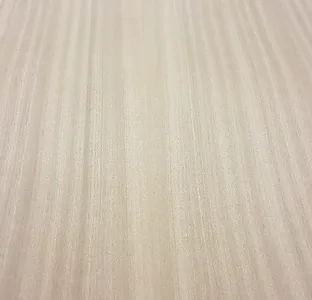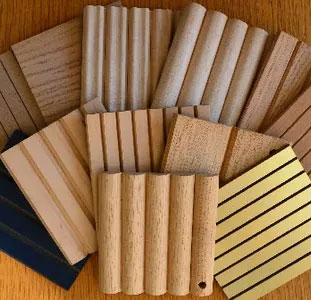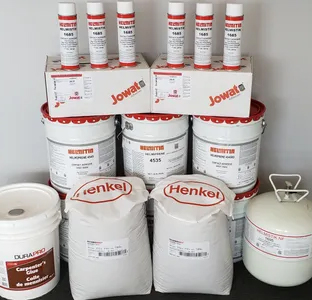Frequently Asked Questions
What types of wood do suppliers typically offer to customers?
Suppliers typically offer customers a variety of wood types, including hardwoods like oak, maple, and cherry, as well as softwoods like pine and cedar, each with distinct characteristics and applications in architectural and design projects.
How do I negotiate prices with wood suppliers?
Negotiating prices with wood suppliers involves understanding market rates, comparing quotes, and leveraging your business relationship to secure the best possible pricing for the desired wood products.
How do I find a reliable wood supplier near me?
Finding a reliable wood supplier near you involves researching local vendors, checking their product quality, delivery timelines, and customer reviews to ensure they meet your architectural wood product needs.
Do wood suppliers offer custom cutting services?
Many wood suppliers do offer custom cutting services to accommodate the specific needs of their architectural and design customers.
What is the process of sourcing wood from suppliers?
The process of sourcing wood from suppliers involves carefully evaluating the quality, sustainability, and availability of lumber from various vendors to ensure Trumatch can provide its customers with the highest-grade architectural wood products.
What makes a wood product high quality?
High-quality wood products are characterized by their superior craftsmanship, durable construction, and premium materials, ensuring exceptional performance and longevity for architectural applications.
Are your wood products sustainably sourced?
Trumatch International Inc. is committed to sourcing all its wood products from sustainable and responsibly managed forests, ensuring environmental preservation and ethical business practices.
What certifications should wood suppliers have?
Wood suppliers should have certifications that demonstrate their commitment to quality, sustainability, and compliance with industry standards. This may include certifications such as FSC (Forest Stewardship Council), PEFC (Programme for the Endorsement of Forest Certification), or CARB (California Air Resources Board) to ensure the wood products meet environmental and safety regulations.
What are the benefits of sustainably sourced wood?
The benefits of sustainably sourced wood include environmental responsibility, reduced carbon footprint, and support for responsible forest management practices, making it a preferred choice for eco-conscious architectural and design projects.
How do you ensure wood product quality control?
Trumatch International Inc. ensures wood product quality control through strict inspection and testing at every stage of the manufacturing process, from material selection to final finishing, to deliver consistent, premium-grade architectural wood products.
What wood species are best for durability?
The most durable wood species for architectural applications include oak, maple, and teak, which are known for their strength, hardness, and resistance to wear and tear.
How can I assess wood quality effectively?
Assessing wood quality effectively involves examining grain patterns, color, texture, and absence of defects like knots or cracks. Carefully inspecting the wood's physical characteristics can help determine its suitability for architectural or design projects.
What factors influence wood pricing from suppliers?
The key factors that influence wood pricing from suppliers include the type and quality of the wood, the availability and demand, transportation costs, and any processing or treatment required.
How do I verify a wood suppliers reputation?
Verifying a wood supplier's reputation involves checking their industry certifications, customer reviews, and production quality. This helps ensure they meet your architectural wood product requirements.
What types of wood finishes are available?
Trumatch International Inc. offers a variety of wood finishes, including natural, stained, and lacquered options, to meet the diverse needs and preferences of architects and designers.
How can I request custom wood dimensions?
To request custom wood dimensions, you can contact Trumatch International Inc. and provide your specific requirements. They offer tailored solutions to meet the needs of architects and designers.
What is the lead time for wood orders?
The lead time for wood orders varies depending on the specific product and quantity. Customers can expect a typical lead time of 2-4 weeks for standard wood veneer, edgebanding, and tambour panel orders.
How do I compare wood suppliers offerings?
Comparing wood suppliers' offerings involves evaluating factors such as product quality, selection, pricing, delivery timelines, and customer service to find the best fit for your architectural wood project requirements.
What are the advantages of local wood suppliers?
The advantages of local wood suppliers include shorter delivery times, lower transportation costs, and the ability to support the local economy and businesses. Local suppliers can also provide personalized service and better understand the specific needs of the local market.
How can I ensure sustainable wood sourcing?
Ensuring sustainable wood sourcing involves partnering with suppliers that practice responsible forestry, utilize recycled or reclaimed materials, and adhere to eco-friendly certifications like FSC or PEFC.
What are common wood product applications?
Common wood product applications include architectural elements, furniture, cabinetry, flooring, and decorative accents. Trumatch International Inc. specializes in providing high-quality wood veneers, edgebanding, and tambour panels for these diverse applications.
How do I maintain wood product longevity?
Maintaining wood product longevity involves proper care and maintenance. Regular cleaning, protecting from moisture and sunlight, and occasional refinishing can help preserve the integrity and appearance of wood products over time.
What certifications indicate high-quality wood products?
High-quality wood products are often certified by organizations such as the Forest Stewardship Council (FSC) and the Sustainable Forestry Initiative (SFI), which verify responsible sourcing and sustainable forestry practices.
How can I find specialty wood suppliers?
To find specialty wood suppliers, you can search online directories, attend industry trade shows, or reach out to professional associations that connect businesses with quality wood vendors.
What are the trends in wood product design?
The trends in wood product design include the increasing use of sustainable and eco-friendly materials, innovative surface finishes, and customizable designs to meet the evolving preferences of architects and designers.
How do I choose between solid and engineered wood?
Choosing between solid and engineered wood depends on your project requirements, budget, and personal preferences. Solid wood offers a natural, rustic look, while engineered wood is more dimensionally stable and cost-effective for certain applications.
What is the impact of climate on wood quality?
The climate has a significant impact on wood quality, as environmental factors such as temperature, humidity, and precipitation can affect the wood's structural integrity, color, and overall appearance.
How can I identify reclaimed wood products?
Identifying reclaimed wood products involves looking for signs of wear, weathering, and unique character, such as nail holes, saw marks, and natural distressing, which distinguish them from new wood.
What are the best practices for wood storage?
The best practices for wood storage involve keeping the wood in a cool, dry, and well-ventilated area, away from direct sunlight and moisture. Proper stacking and wrapping can help prevent warping, cracking, or discoloration of the wood.
How do I handle wood product returns?
Handling wood product returns involves following a clear process. Contact Trumatch International to initiate the return, provide details on the issue, and coordinate the pickup or delivery of the item. Their team will assist you in resolving the matter efficiently.




